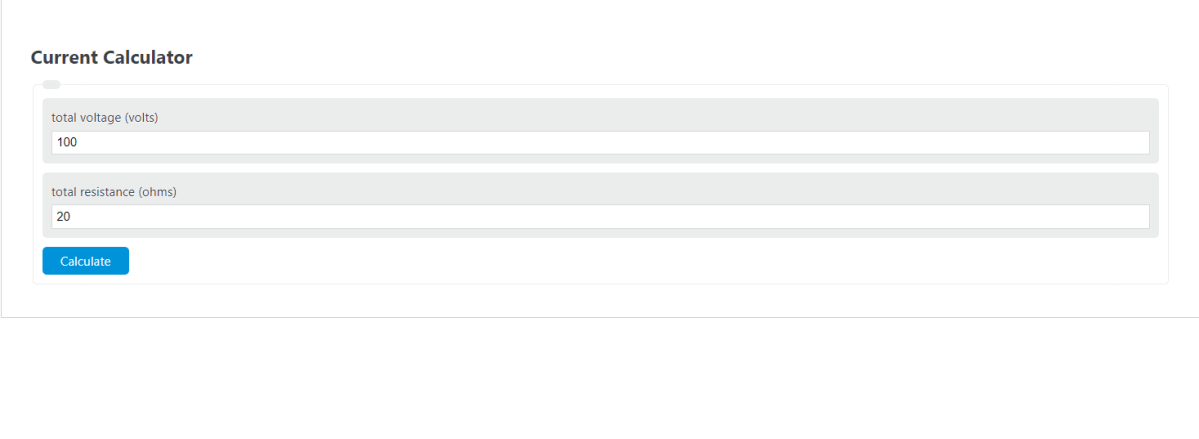Enter the total voltage (volts) and the total resistance (ohms) into the calculator to determine the Current.
- All Electrical Calculators
- Current Imbalance Calculator
- LED Inrush Current Calculator
- Over Load Current Calculator
- Total Current Calculator
- 3 Phase Current Calculator
- Short Circuit Current Calculator
Current Formula
The following formula is used to calculate the Current.
I = V/R
- Where I is the Current (amps)
- V is the total voltage (volts)
- R is the total resistance (ohms)
To calculate a current, divide the total voltage by the total resistance.
How to Calculate Current?
The following two example problems outline how to calculate the Current.
Example Problem #1:
- First, determine the total voltage (volts). In this example, the total voltage (volts) is measured to be 100.
- Next, determine the total resistance (ohms). For this problem, the total resistance (ohms) is calculated to be 25.
- Finally, calculate the Current using the formula above:
I = V/R
Inserting the values from above and solving the equation with the imputed values gives:
I = 100/25 = 4 (amps)
FAQ
What is Ohm’s Law?
Ohm’s Law is a fundamental principle in electrical engineering that describes the relationship between voltage, current, and resistance in an electrical circuit. It states that the current through a conductor between two points is directly proportional to the voltage across the two points and inversely proportional to the resistance between them. The formula is represented as I = V/R, where I is the current in amperes, V is the voltage in volts, and R is the resistance in ohms.
How do you measure electrical resistance?
Electrical resistance can be measured using a device called an ohmmeter. First, ensure the circuit is powered off and disconnected from any power source. Connect the ohmmeter’s leads to the two points in the circuit where you want to measure the resistance. The ohmmeter will then provide a reading in ohms (Ω), indicating the resistance between those two points.
Why is it important to calculate electrical current?
Calculating electrical current is crucial for designing and maintaining electrical systems safely and efficiently. Knowing the current helps in selecting the appropriate components, such as wires and resistors, that can handle the expected electrical load without overheating or failing. It also aids in troubleshooting circuits, identifying potential issues like short circuits or overloads that could cause damage or pose safety hazards.
